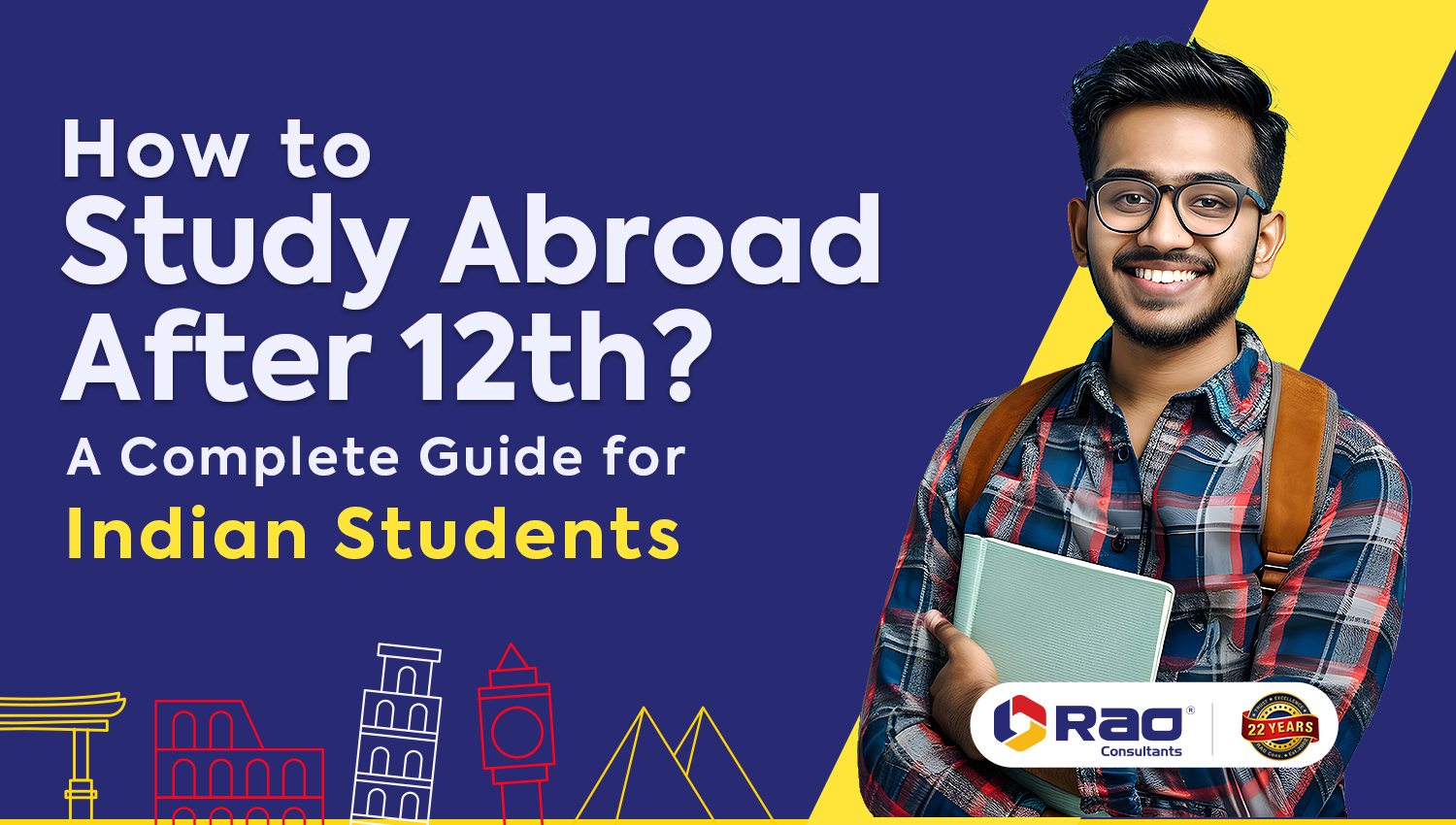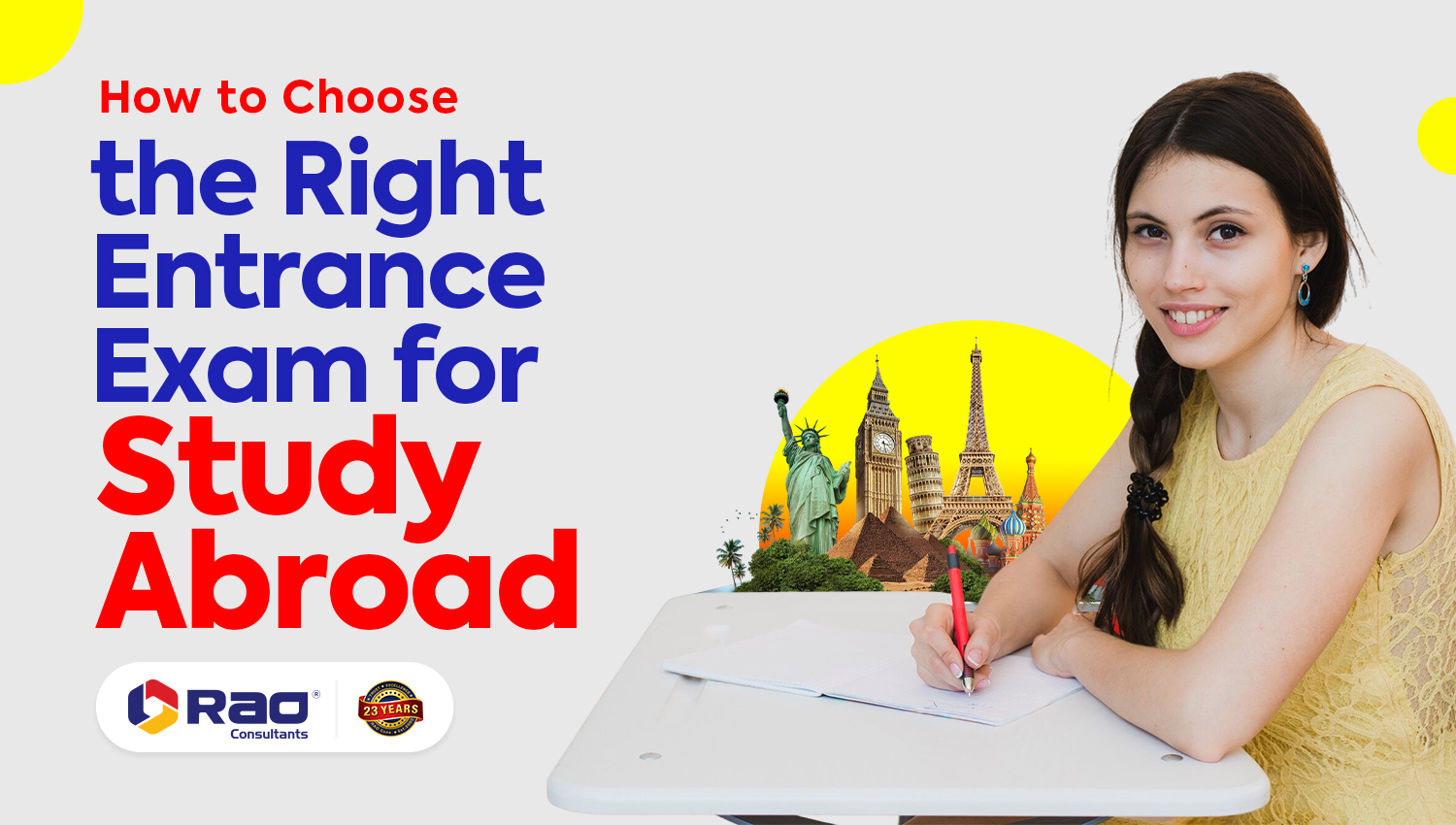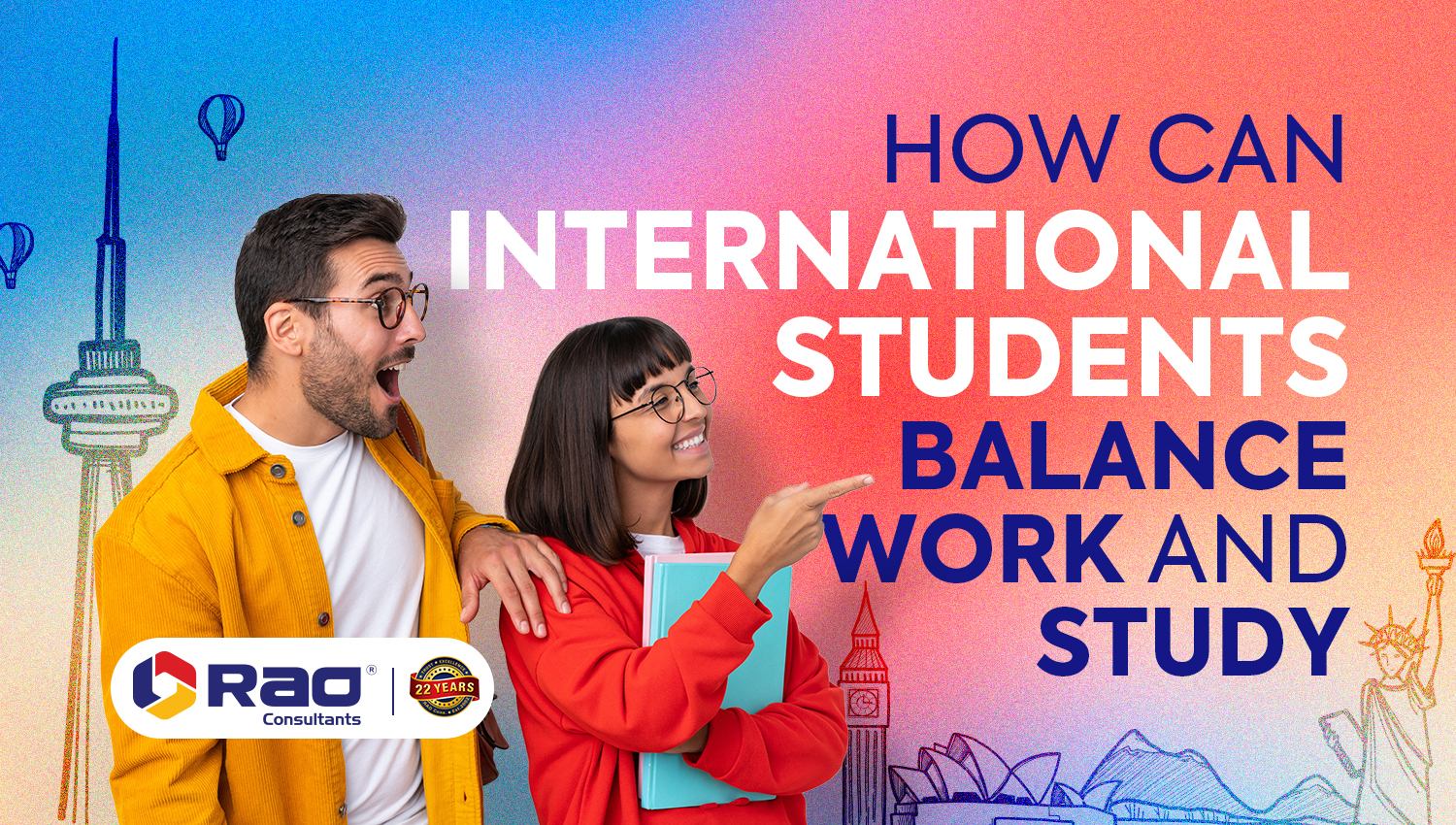
Rao Consultants
March 10, 2025
How to Study Abroad After 12th? A Complete Guide for Indian Students
![]()
Looking at the recent trends of Indian students pursuing education abroad, it can be seen that these numbers are all time high. As per the data, more than 1.3 million Indian Students choose to study abroad and got enrolled in foreign institutes in the year 2024. This shows the popularity of study abroad on a rise and with this popularity students are often perplexed with the decision of whether to move abroad for higher education after their schooling or after graduation.
For Indian students, studying abroad after completing the 12th grade is an exciting option, but it’s a life-altering choice that requires careful consideration. Studying overseas after high school exposes students to different cultures, expands their horizons academically and professionally, and fosters personal development. But organizing this trip calls for a calculated strategy. Every stage is essential to realizing your desire, from selecting the best nation and program to preparing financially and applying for a visa.
This blog’s goal is to give Indian students who want to study overseas after the 12th grade a thorough road map that covers all the important details of the trip, such as the advantages, top locations, in-demand courses, and cost factors.
Why Study Abroad After 12th?
Pursuing higher education abroad immediately after 12th standard comes with numerous advantages:
- Global Exposure and Quality Education
Students who study abroad are exposed to a variety of teaching methods and cultural practices. This helps them in their personality development and understand different perspective. There are numerous institutions abroad that provide state of the art facilities where students are given plethora of chances for research, with a practical learning approach.
- Better Career Opportunities
Having a degree from a reputable international university boosts your employability globally and gives your CV more weight. While studying abroad at an International University many of the students are given access to part-time jobs and many internship opportunities, which aid with their acquisition of practical experience.
- Early Career Advantage
After completing their 12th grade, students who study abroad have the benefit of beginning their professions sooner than those who study in India before relocating overseas for their post-graduation studies. Post-study work visas are offered by several nations, enabling students to obtain job experience following graduation.
- Personal Growth and Independence
Students who live abroad gain independence, while living on their own and dealing with their surroundings give them problem-solving abilities, which’s byproduct is flexibility and skills development that are highly sought after in the workplace. Connecting and communicating with individuals from different cultural background helps students develop interpersonal and communication skills which later assist them in building a global career.
Comparing Study Abroad After 12th vs. After Graduation
|
Aspect |
After 12th |
After Graduation |
|
Duration of Study |
Typically, longer (3-4 years for undergraduate programs). |
Shorter duration (1-2 years for postgraduate programs). |
|
Cost Implications |
Higher overall cost due to longer study period. | Lower overall cost owing to shorter duration. |
| Age and Adaptability | Younger age may result in greater adaptation to different cultures and learning contexts. |
Older kids may struggle to adjust, but they offer greater maturity and attention. |
|
Career Entry Point |
Early access into global employment markets, with foreign experience from the start. | Prior job experience may enhance postgraduate study and employment opportunities. |
| Specialization Level | Broader undergraduate education allows for investigation of numerous subjects. |
Focused specialization improves proficiency in a particular topic. |
Both routes offer advantages, and the decision is based on personal preparation for exposure to other countries, financial concerns, and career objectives.
Best Study Abroad Destinations for Indian Students
Affordability, employment prospects, and educational quality are some of the variables that influence the choice of nation for postsecondary education. Some of the best places for Indian students to study are as follows:
|
Country |
Why Choose It? | Popular Courses |
| USA | World-class universities, research opportunities |
STEM, Business, Data Science |
|
Canada |
Affordable tuition, PR pathways, safe environment | Engineering, Healthcare, IT |
| UK | Shorter course duration, globally recognized degrees |
Business, Finance, Arts |
|
Australia |
Post-study work visa, high employability | Accounting, Hospitality, Nursing |
| Germany | Low tuition fees, strong economy |
Engineering, Automotive, Medicine |
|
Ireland |
Growing job market, tech industry hub | IT, Biotechnology, Pharmaceuticals |
| New Zealand | Safe environment, high-quality education |
Agriculture, Environmental Science |
Choosing the Right Course Based on Your Stream
Every student has a different academic background, and selecting a course that aligns with their interests and career goals is crucial.
- For Science Students
- Engineering & Technology: Mechanical, Civil, Electrical, Aerospace
- Medical & Healthcare: MBBS, Nursing, Biotechnology
- Pure Sciences: Physics, Chemistry, Environmental Science
- For Commerce Students
- Business & Management: Finance, Marketing, Human Resource Management
- Accounting & Finance: Chartered Accountancy, Banking
- International Trade & Economics
- For Arts & Humanities Students
- Mass Communication & Journalism
- Psychology & Social Sciences
- Fine Arts & Design
Application Process: Step-by-Step Guide
For Indian Students wanting to study abroad, after completing their schooling there following are the steps they can follow to make their study abroad hassle free and without any error:
Step 1: Research and Shortlist Universities
- Explore universities based on rankings, courses, faculty, and infrastructure.
- Check entry requirements, tuition fees, and scholarships.
Step 2: Prepare for Standardized Tests
- English proficiency tests: IELTS, TOEFL, PTE
- Other exams: SAT (for undergraduate admissions in the US), ACT
Step 3: Apply to Universities
- Submit online applications with necessary documents like academic transcripts, Statement of Purpose (SOP), and Letters of Recommendation (LOR).
Step 4: Secure Admission & Arrange Finances
- Once you receive an offer letter, confirm your admission and pay the deposit.
- Apply for scholarships and explore education loan options.
Step 5: Apply for a Student Visa
- Gather all required documents, including financial proof and acceptance letter.
- Schedule and attend the visa interview.
Step 6: Plan for Accommodation & Travel
- Arrange for student housing or homestays.
- Book flight tickets and purchase travel insurance.
Scholarships & Financial Aid Options
Studying abroad can be expensive, but there are several financial aid options:
- Merit-Based Scholarships
Awarded based on academic excellence and extracurricular achievements.
- Examples: Fulbright Scholarships (USA), Chevening Scholarships (UK).
- Need-Based Scholarships
Granted to students who demonstrate financial need.
- Examples: Tata Scholarship for Indian students at Cornell University.
- Government-Funded Scholarships
Provided by governments to encourage international students.
- Examples: Australia Awards Scholarships, DAAD Scholarships (Germany).
- Education Loans
Indian banks offer loans for overseas education.
- Examples: SBI Global Ed-Vantage Scheme, HDFC Credila Education Loan.
- University-Specific Scholarships
Offered directly by universities based on academic performance or other criteria.
- Example: University of Toronto’s Lester B. Pearson International Scholarship.
Post-Study Work & Career Opportunities
Many countries offer post-study work visas to allow international graduates to gain work experience:
|
Country |
Post-Study Work Visa Duration | Opportunities Available |
| USA | 12-36 months (OPT for STEM) |
H-1B visa sponsorships |
|
Canada |
Up to 3 years (PGWP) | PR pathways, high employability |
| UK | 2 years (Graduate Route) |
Smooth transition to work visas |
|
Australia |
2-4 years | PR-friendly policies, skill shortage list |
| Germany | 18 months |
Blue Card scheme for skilled workers |
|
Ireland |
2 years |
Growing tech and finance job market |
Final Thoughts
Preparing for your study abroad experience after the 12th grade needs extensive research and deliberate decision making. Every step, from choosing the correct place and course to managing funds and obtaining a visa, contributes significantly to your future. With the right preparation, direction, and perseverance, you may begin on a fulfilling academic and professional adventure overseas.
If you’re unsure where to begin, seeking expert consultation can help simplify the process and provide personalized guidance for a successful study abroad experience.
Share onYou May Also Like

How to Choose the Right Entrance Exam for Study Abroad ?
![]()
Studying abroad is a dream for many Indian students, but it often requires a critical step: passing the right entrance exams. Just like you need a ticket to board a flight, these exams are your entry pass into foreign universities. Whether it’s to prove your English language skills or to showcase your academic excellence, entrance […]
Read More
How Can International Students Balance Part-Time Work and Study?
![]()
Studying abroad is a dream come true for many students. when you’re juggling part-time work and study then it’s enriching, exciting, and at times, a little overwhelming. Sounds like walking a tightrope, doesn’t it? For many international students, working part-time isn’t just a choice; it’s a necessity. But how do you keep your grades up […]
Read More
Top Part-Time Jobs for International Students in Ireland
![]()
Are you planning to study in Ireland and wondering how to manage your expenses? You’re not alone. Thousands of international students ask the same question each year. The good news? Ireland offers plenty of part time job opportunities that can help ease your financial load—and even boost your resume. Think of it like riding a […]
Read More